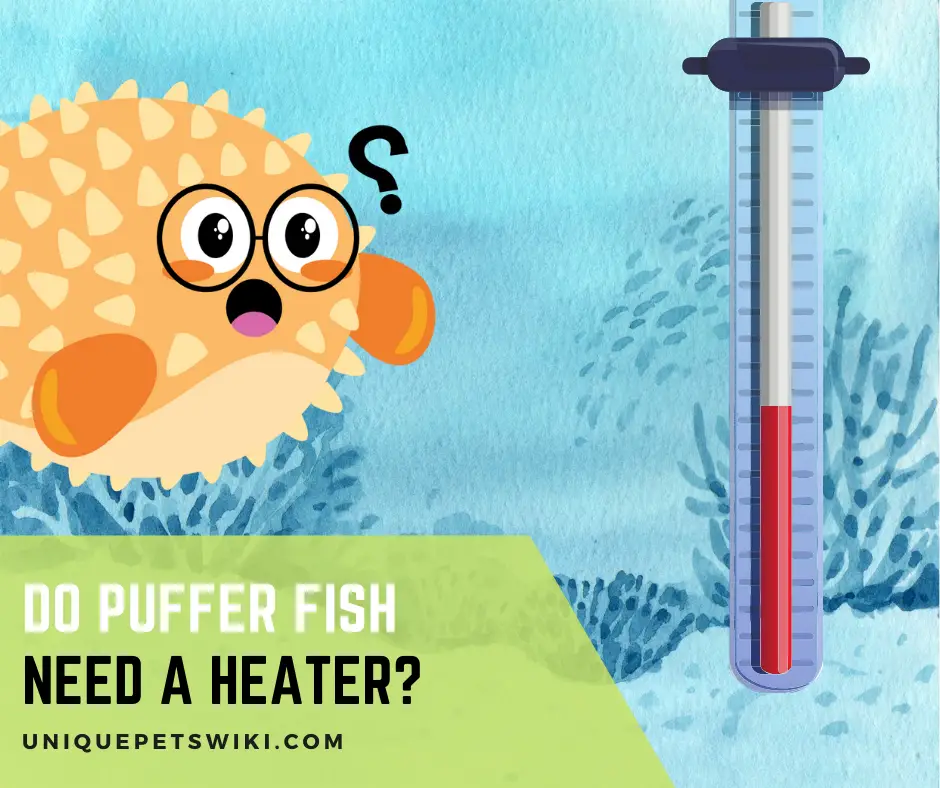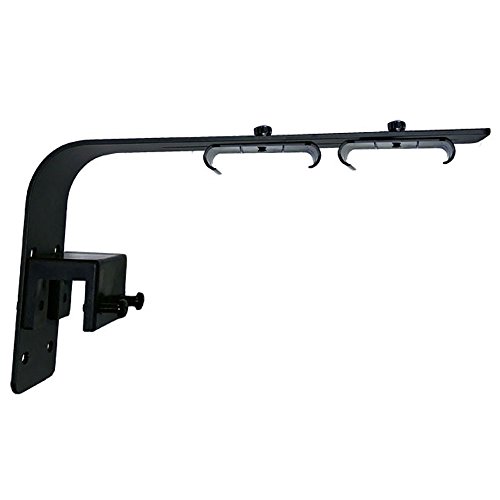Pufferfish are unique creatures and keeping them as pets is a satisfying hobby. However, they also need proper tank conditions to thrive. One of the most common questions pufferfish enthusiasts ask is “do pufferfish need a heater?”
There is no straightforward answer here. Some species of pufferfish need warm water and might need a heater if you live in a cold region. Some other species might do well without one.
Read on to find out whether pufferfish need a heater.
Contents
Do Puffer Fish Need a Heater?
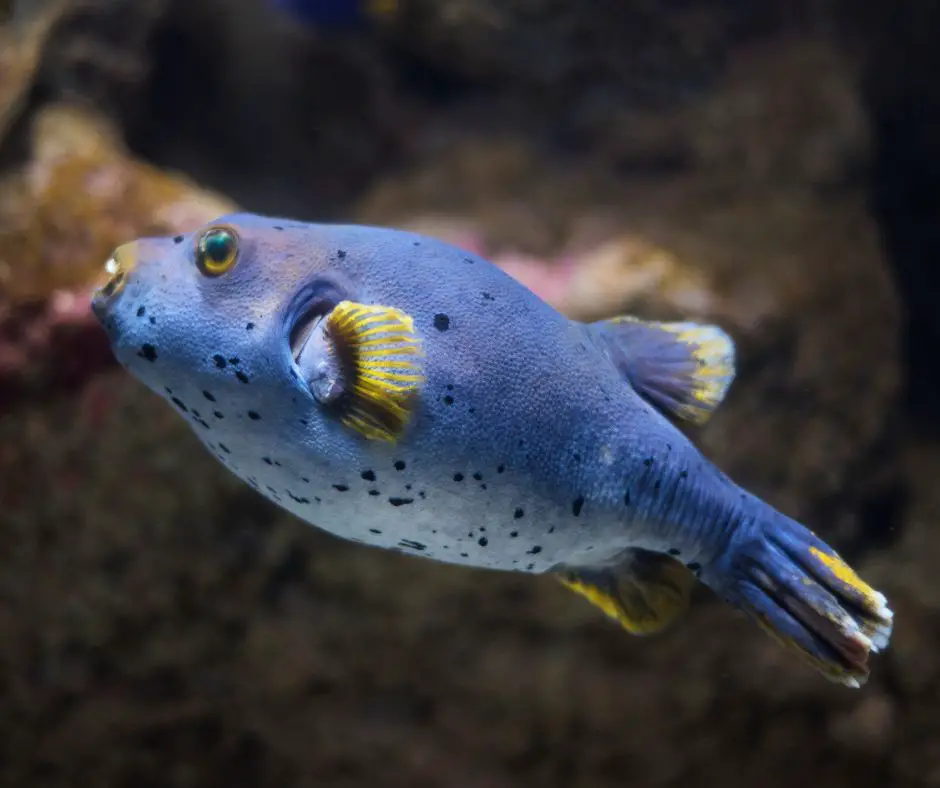
As mentioned above, the answer to the question: do puffer fish need a heater is not a straightforward one. A heater is optional for some species of pufferfish while others might need one, especially in winters.
The answer, in short, depends on the ambient temperatures. If your room temperature is between 74 and 82 F (or 23 to 28 C), then your pufferfish might not need a heater.
However, if you live in a very cold climate where temperatures drop below freezing then you might need a heater. This is very important to keep your tropical pufferfish healthy and comfortable.
In many areas, the temperature is warm during the day but can drop tremendously at night time. In such cases too, your puffer fish would benefit from a heater. Also, if you keep your pufferfish in a room having air conditioning, then a water heater is a must-have accessory for your pet’s tank.
Both baby and adult pufferfish will need a heater at least in the freezing winter months or when the room temperature drops below 70 F. This is very important for your fish’s health, safety, and comfort.
Ideal Temperature for Pufferfish
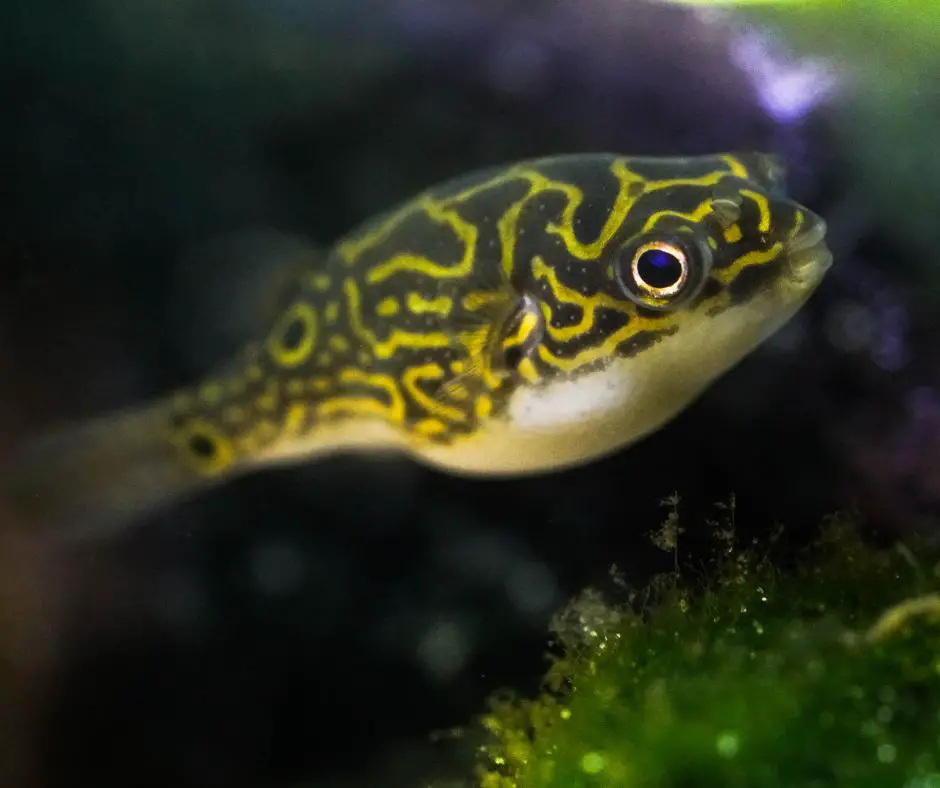
The right temperature range for your pufferfish depends on the type or species of fish you have. Different species of pufferfish have different requirements in terms of pH, water temperature, salinity, etc.
After all: There are nearly 180 odd species of pufferfish on this planet. Some of them live in the shallow waters of the sea. Others live in the freshwater of lakes and rivers. Some even thrive in estuaries and brackish waters between the river and sea.
Naturally, these different species also need different water conditions.
Having said that: most pufferfish are found in tropical waters and they prefer warm water.
For this reason, experts recommend keeping the tank water at a temperature range between 74 and 82 F (or 23 to 28 C). A couple of degrees Fahrenheit below this range is usually acceptable. However, it is best not to let the water temperature drop below 70 F. The cold water can shock your pet and might even kill it.
Best Heaters for Pufferfish
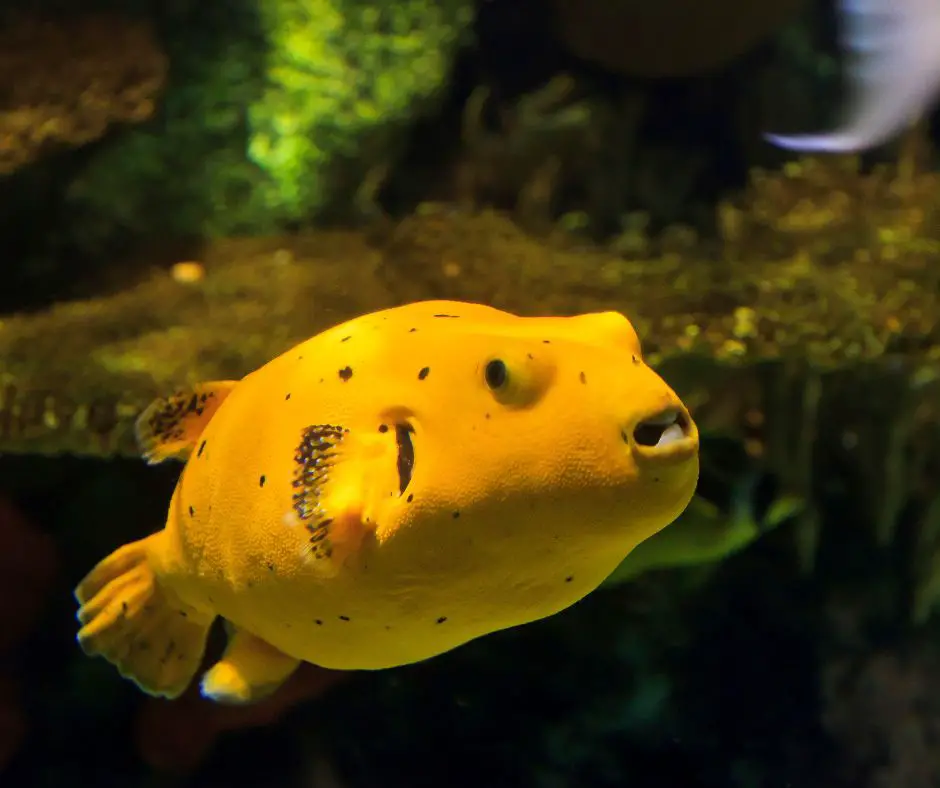
Now that you know that certain pufferfish varieties need a tank heater under certain circumstances, it is important to choose a reliable and accurate aquarium heater. Good heaters can help you keep your pet’s water temperature stable.
Choosing the heater for your pufferfish depends on various factors like the size of your tank, adjustability, ease of use, etc.
We recommend the following heaters for their accuracy, ease of readout, and ease of setup:
| Name of heater | Features | Pros | Cons |
| Aqueon Aquarium Heater | 50 W, suitable for 20 gallons, Convenient features for the installation,Indicator LED lights to tell when heating/off | 1) Adjustable heat setting from 68 to 88 F 2) Auto-shutoff on overheating 3) Ideal for freshwater and saltwater pufferfish | 1) Suction cups for installation tend to fail after a while. 2) Some units were not accurate |
| Tetra brand heaters | 2 to 10-gallon tanks, Indicator LED lights to tell when heating/off,compact, fully submersible | 1) Easy to use 2) Durable 3) Maintains water at 78 F, no adjustment needed | 1) Some units overheated |
| Fluval E300 Advanced Electronic Heater | For 100-gallon tanks, range of 68 to 93 F, fast-heating technology, auto-shutoff, slim-profile for easy mounting | 1) Easy to mount and use 2) Accurate 3) come with light indicator | The plastic housing around the heater tends to collect fish poo and debris. |
| Eheim | Tru-temp dial calibration, auto-shutoff prevents dry running, shock-resistant, shatter-proof glass. For bigger tanks, go for the 50w version | 1) Durable and shatterproof 2) Adjustable 3) Simple installation, long cord for easy mounting4 ) Safe | 1) Dial tight to turn. |
A Few Rules For Setting Up a Fish Tank Heater
There are some simple tips and rules to follow when setting up a fish tank heater for your pufferfish:
Use the heater of the right wattage – A rule of thumb regarding aquarium heater wattage is 5 W per gallon for aquariums 55-gallons or smaller.
Always use manufacturer’s instructions regarding installation – Different tank heaters have different rules for mounting. Some heaters, for example, need to be immersed in the water before plugging in. This ensures that the temperature equalizes before making adjustments. Some heaters need to be mounted at an angle for accurate heating.
Use a separate thermometer to check the aquarium temperature. Only then make the adjustments after plugging the heater in. Set the temperature a few degrees warmer and increase the temperature a degree slowly.
Make small adjustments – The thermostats in fish heaters are very sensitive and are set to operate in a fixed range. Therefore, large adjustments could end up making very large temperature differences.
When you bring new pufferfish to add to the tank, place them in a bag with water and float the bag with the pufferfish for about 30 minutes. This is very important to prevent shocking the fish.
In some areas of the tank, there will be temperature fluctuations. This is fine as long as the range remains between 74 and 82 F (or 23 to 28 C).
Puffer Fish Aquarium Setup
The puffer fish aquarium setup will greatly depend on the type and species of puffer you own. Here are the general steps for tank setup for most pufferfish:
Choose the tank of the correct size – Pufferfish need a lot of room, more than most fish species. Always select a 20 to 30-gallon tank for a small pufferfish and for varieties that grow over 20 inches will need at least a 100-gallon tank.
Choose tankmates wisely – Pufferfish are rather territorial and aggressive creatures. So. you must choose the fish’s tankmates wisely. It may be best to house an aggressive pufferfish on its own.
Buy a water testing kit. This will help you determine salinity, pH, ammonia, nitrates, and nitrites in the water. These parameters will vary based on the species of puffer fish you own.
API SALTWATER MASTER TEST KIT 550
- Contains one (1) API SALTWATER MASTER TEST KIT 550-Test Saltwater Aquarium Water Test Kit, including 6 bottles of testing solution, 1 color card and 4 glass test tubes with cap
- Helps prevent invisible water problems that can be harmful to fish and cause fish loss
- Accurately monitors 4 most vital water parameters levels in saltwater aquariums: high range pH, ammonia, nitrite and nitrate
- Designed for use in saltwater aquariums
- Use for weekly monitoring and when water or fish problems appear
Last update on 2022-12-30 / Affiliate links / Images from Amazon Product Advertising API
Substrate – this can be gravel or crushed coral depending on the species.
If you have a saltwater pufferfish, you need marine salt. This is different than aquarium salt which is used for conditioning water. Do not add salt if you have freshwater pufferfish. You’d also need a hydrometer to measure the salinity of the water.
Lighting – most puffers prefer diffused lights as bright lights could startle them.
pH – Freshwater species need a pH between 7.0 and 7.6.
Water hardness and currents – these depend on the species of pufferfish. Most do well in tanks with low current (as they are very slow swimmers) and dKH (hardness) between 8 and 12.
Provide plenty of vegetation, rocks, hiding areas, etc. for your fish.
Pufferfish produce a lot of waste so make 50% water changes weekly.
Current USA Orbit LED Adjustable Tank Mount Bracket (4193)
- LOW PROFILE DESIGN- Low profile design provides a sleek, stylish look.
- UNIVERSAL FIT- Fits most rimless and framed tanks up to 1 inch thick
- EASY INSTALLATION- Mounts directly to aquarium tank. Arm requires assembly.
- ADJUSTABLE POSITIONING- Allows light to be adjusted front-to-back and in height
- COMPATIBILITY- Compatible with Current USA Orbit Marine LED PRO, Orbit Marine LED, Orbit IC LED,Satellite LED Plus and Satellite LED Plus PRO. Not compatible with any other models.
Last update on 2022-12-29 / Affiliate links / Images from Amazon Product Advertising API
FAQs
Can puffer fish live in cold water?
Pufferfish are tropical fish and they prefer warm water. The ideal temperature for most species is between 74 and 82 F (or 23 to 28 C).
Are puffer fish easy to care for?
Compared to other commonly kept aquarium fish, pufferfish need a lot of care and ideal water conditions. They are definitely not good as starter pets. Pufferfish need a lot of looking after and you will have to keep an eye on your fish more than you’d on other fish species.
Are puffer fish illegal to own?
Pufferfish are not illegal to keep as pets. However, they are illegal to be cooked and served in many US restaurants and owners will need a special license for the purpose.
Can you put 2 puffer fish together?
You could try putting two puffer fish together but do keep an eye on them. They are extremely territorial and aggressive and tend to fight. If fighting occurs, you might want to separate them right away.
Key Takeaways – Do Puffer Fish Need a Heater?
Pufferfish need water temperatures in the range of 74 and 82 F (or 23 to 28 C). If your ambient temperature fluctuates a lot or is way below this range, then you’ll need an aquarium heater.
Accordingly, you could choose from Aqueon Aquarium Heater or Tetra brand heaters. Fluval is another great heater.
We hope this guide helps you keep your puffer fish more comfortable!
